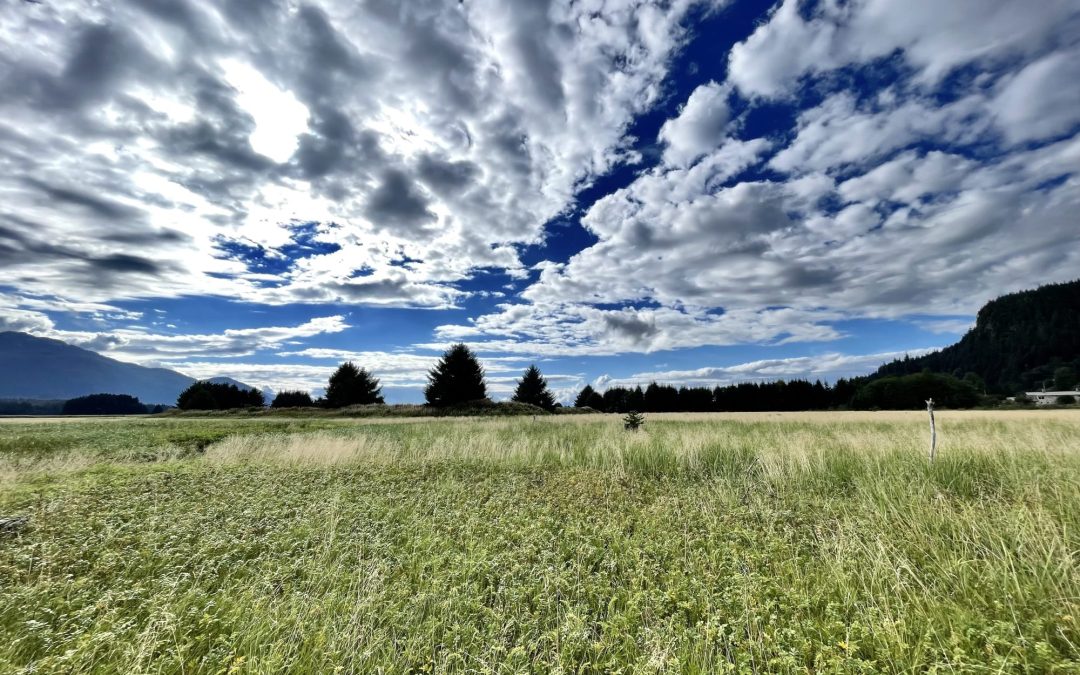Juneau, AK – The Southeast Alaska Land Trust (SEALT) announced an updated wetland mitigation program to provide mitigation options for developers which will preserve wetlands critical to Southeast Alaska.
At the end of 2022, SEALT updated and renewed its agreement with the U.S. Army Corps of Engineers (USACE) as an authorized compensatory mitigation sponsor.
Development of wetlands or “waters of the United States” is regulated by the Clean Water Act through a permitting process. The USACE administers the permitting program and can issue permits for projects that affect wetlands if: 1) no practicable alternative exists that would be less damaging to the aquatic environment, and 2) if the impacts to wetlands are avoided, minimized, or mitigated.
“Wetland mitigation is not just a matter of environmental conservation, it is a vital step towards ensuring the sustainability and resilience of our communities and ecosystems while being mindful of needed infrastructure,” states Alex Wertheimer, Lands Committee Chair for the SEALT Board of Directors. “Coastal wetlands and riparian areas along our streams play a crucial role in filtering pollutants, controlling floods, and providing habitat for a wide variety of plants and animals. Without proper wetland mitigation, we risk losing these invaluable resources and the benefits they provide to both nature and people.”
When unavoidable impacts to waters of the U. S. must occur, either permittee-responsible mitigation or compensatory mitigation may be required. SEALT’s In-Lieu Fee Mitigation Program provides compensatory mitigation for impacts to both wetlands and streams. Mitigation involves the preservation, restoration, enhancement, or establishment of wetlands to offset the losses to aquatic resources from the development project, ideally within the same watershed or subregion where the development occurred. SEALT has been a mitigation sponsor since 1998, and its updated agreement provides the structure to continue to provide convenient compensatory mitigation to permit holders throughout Southeast Alaska.
“I am so proud of the work we completed over the last year to bring this new and improved program online,” states Margaret Custer, SEALT’s Executive Director. “We are pleased to provide wetland mitigation options for developers of every size, while continuing to ensure that Southeast Alaska’s watersheds are preserved.”
There are three key updates in SEALT’s program:
- Mitigation for wetlands or waterways impacted in a given service area will occur within that same service area. SEALT’s program currently has four service areas in Southeast Alaska.
- The program uses a specific, science-based method to assess impacted wetlands to ensure that the newly-preserved wetlands are equal in function and value to the ones being developed.
- Developers can now reserve compensatory mitigation for a project in advance, ensuring that mitigation will be available for the project regardless of any changes in a developer’s timeline.
“The land trust’s newly updated program builds on SEALT’s legacy as a mitigation provider. We are intent on providing the best mitigation options for developers so that the health of our Southeast Alaska watersheds is ensured for the future,” states Krista Garrett, SEALT’s Conservation Director.
SEALT’s mitigation program works with developers at any scale, from a private landowner building a new home to a municipality expanding an airport or road. If the project impacts a stream or wetland, the developer applies for a permit from the USACE and may be required to mitigate. When mitigation is required, SEALT will then work with the developer to provide the necessary compensatory mitigation specified by the permit and move the project forward. After SEALT provides the mitigation “credits” to the permittee, SEALT is then responsible for the full mitigation obligation – permanently preserving, restoring, enhancing, or establishing an area of equal or greater value.
According to Anne Sutton, President of the SEALT Board of Directors, “The service that the Southeast Alaska Land Trust provides developers is extremely important. Southeast Alaska’s economy depends on healthy waterways and wetlands, so their preservation is critical.”
To date, the Southeast Alaska Land Trust has used this mitigation program to preserve wetland parcels with voluntary landowners bordering the Mendenhall Wetlands State Game Refuge in Juneau; tidal flats in Sitka, Haines, and Juneau; an extraordinarily pristine estuary near Petersburg; a salmon river corridor along the Indian River in Sitka; wetlands along Montana Creek in Juneau; and a property on Hilda Creek near Juneau.
With this renewed in-lieu fee mitigation program, the Southeast Alaska Land Trust looks forward to 25 more years of ensuring healthy watersheds in Southeast Alaska.
The Southeast Alaska Land Trust has been working to conserve lands adjacent to the Mendenhall Wetlands State Game Refuge, as well as other important habitats in Southeast Alaska since 1995. The organization works to preserve the natural resources of the region and to facilitate public recreational and educational opportunities. The Southeast Alaska Land Trust conserves more than 3,600 acres of land in Southeast Alaska.
The Southeast Alaska Land Trust is a nonprofit dedicated to collaborating with communities, individuals, and organizations throughout Southeast Alaska to help ensure that highly-valued habitat, recreation, open space, and cultural and historic areas continue to thrive for the well-being of each generation. For more information about the Southeast Alaska Land Trust and its community and land conservation programs, visit the website at www.SoutheastAlaskaLandTrust.org. Connect with their Facebook page at www.facebook.com/southeastalaskalandtrust1995/, or view photos of their conservation properties on their Instagram account at @SoutheastAlaskaLandTrust.
Learn more about wetland mitigation at this link.

